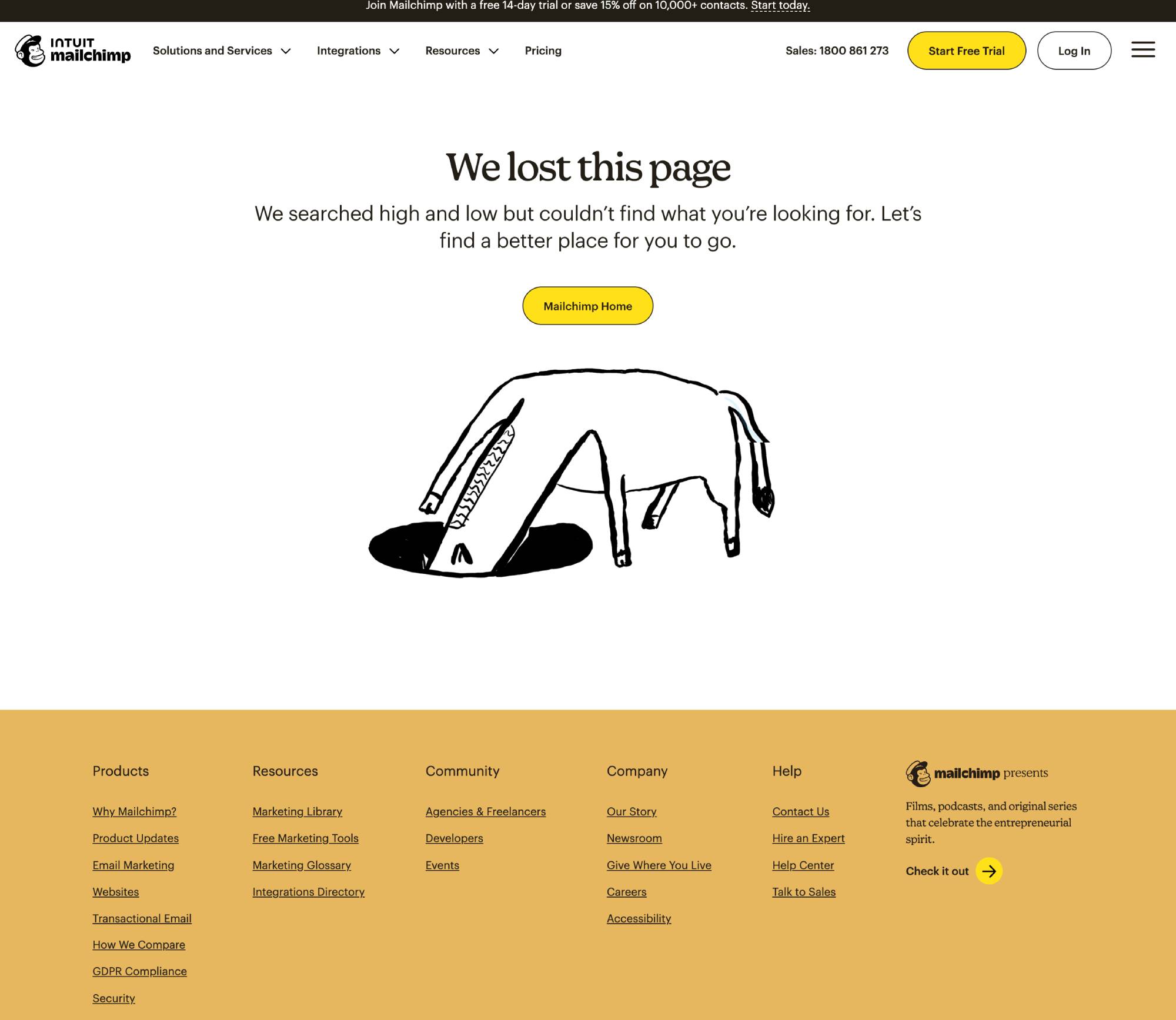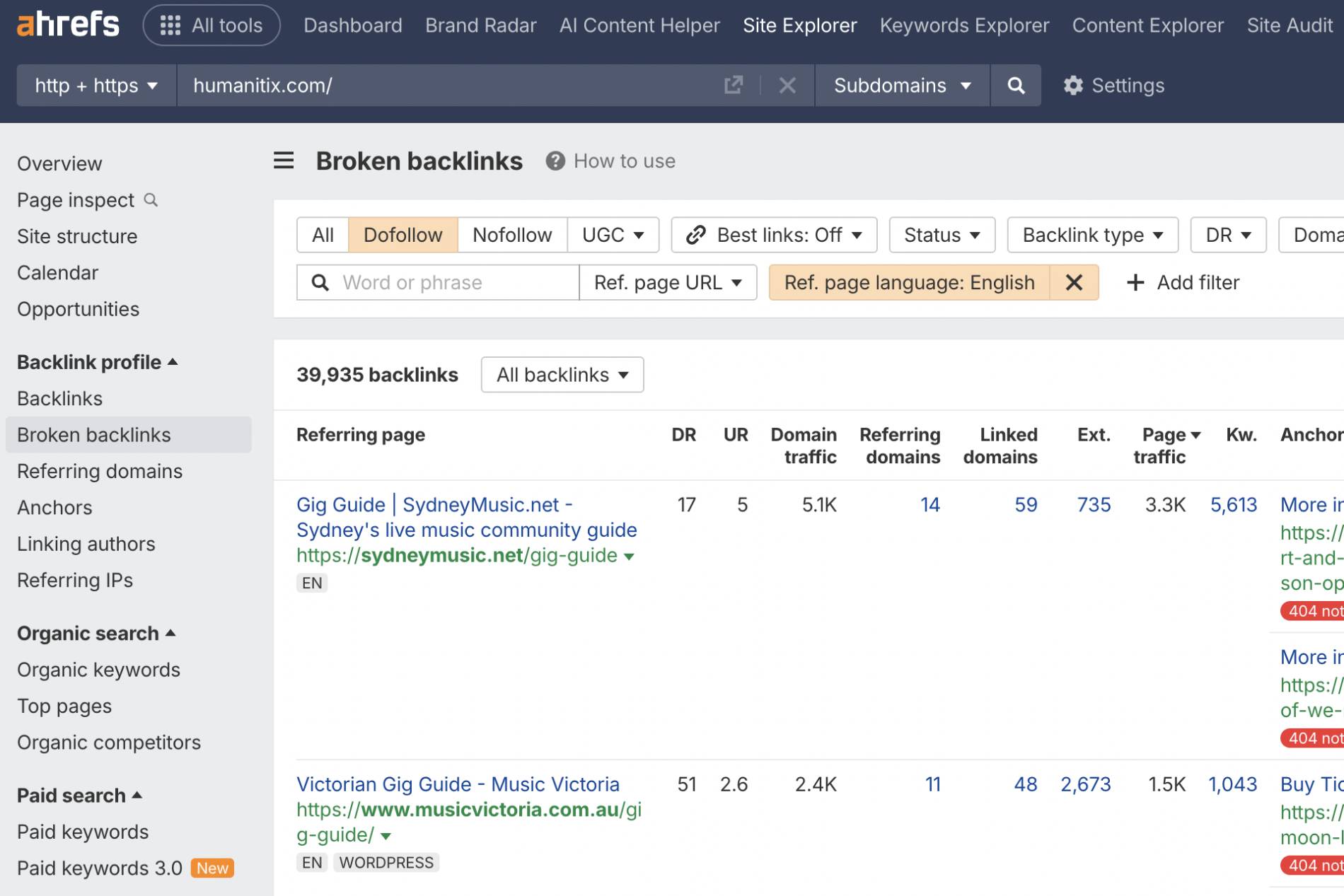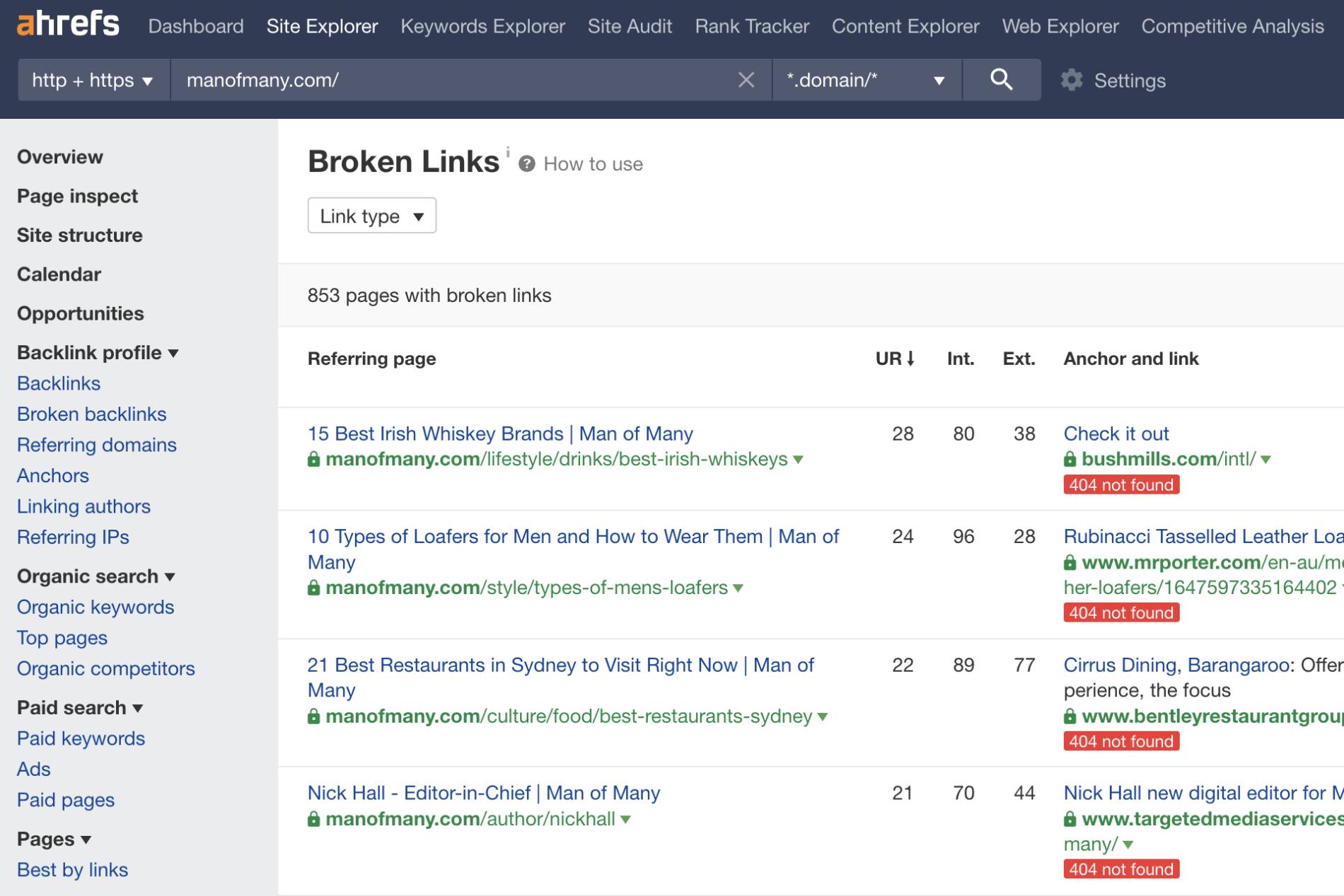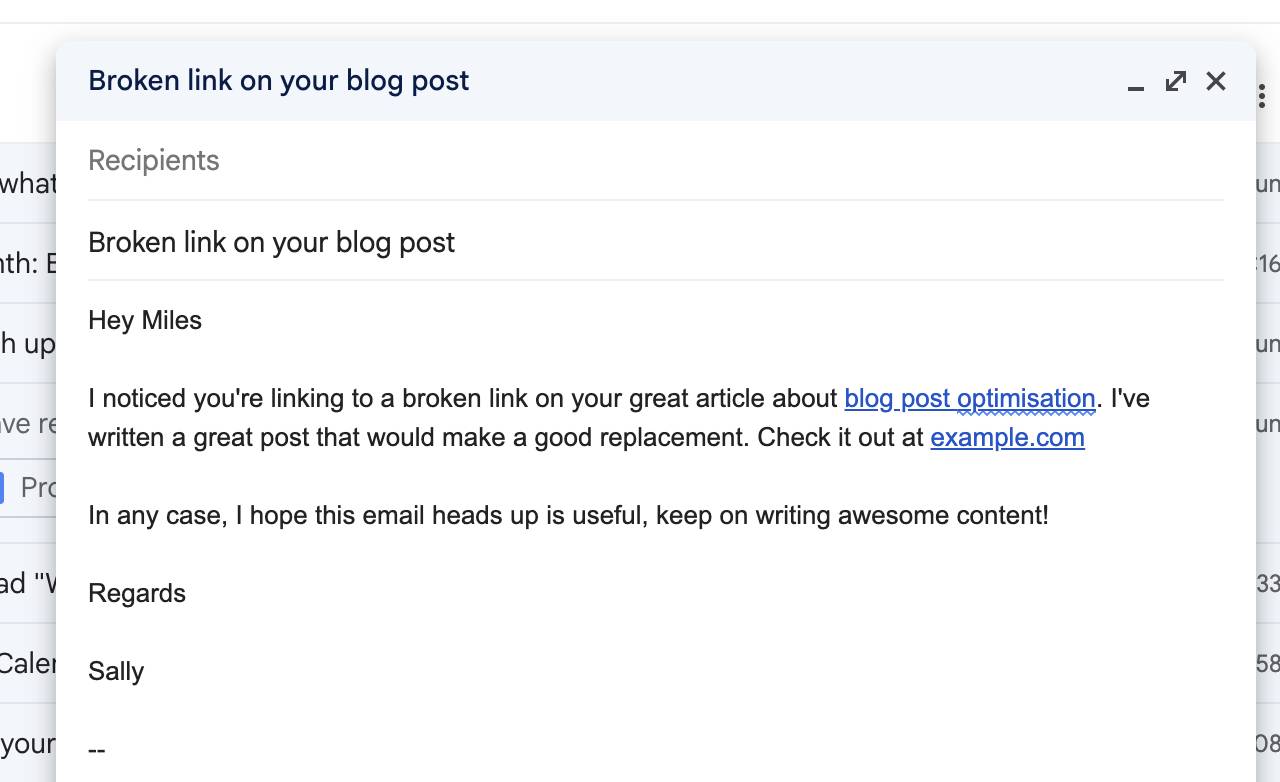Broken link building is one of those SEO strategies that feels a bit like digital archaeology—you’re digging through the web to uncover links that have long since crumbled, then offering a valuable replacement from your own content.
When you think about it, it really is a win-win: website owners get a tidier, more helpful website, and you earn a quality backlink that strengthens your site’s authority.
At its core, the broken link building process is really simple:
- Step 1: Identify broken outbound links (usually 404 errors) on websites in your niche
- Step 2: Create or suggest relevant content from your site that could serve as a better alternative
- Step 3: Reach out to the site owner or webmaster with a polite, helpful heads-up
Think of it as SEO with a dash of altruism.
Benefits of broken link building
Before we get into the nitty gritty on how to do broken link building, let’s cover some of the main benefits of the process.
Broken link building boosts your backlink profile
Traditional backlink outreach can feel like digital door knocking in a way; it can be awkward, intrusive, and often ignored.
Broken link building really flips that dynamic. Instead of asking for a favour out of the blue, you’re offering genuine help. That simple shift—from “Can you link to me?” to “Hey, I found a broken link on your site and have a fix!” dramatically increases your chances of earning a high-quality backlink.
Here’s a few reasons why it works so well:
You’re solving a problem, not creating one. Website owners are busy and appreciate a helpful nudge to clean up dead links.
It shows you’ve done your homework. You’re not sending a generic email blast—you’ve looked at their content, found a flaw, and provided a thoughtful fix. That’s rare, and it builds instant credibility.
It naturally opens the door for new connections. The relationship often starts with gratitude, not a delete button.
Even better? These backlinks often come from highly relevant pages with solid domain authority—meaning they pack a bigger punch for your own rankings. And because you’re stepping in to improve someone else’s site, your chances of being seen as a credible, trustworthy resource go way up.
Broken link building enhances your SEO
Let’s get to the heart of it: broken link building isn’t just polite, it’s powerful.
Every quality backlink you secure strengthens your site’s credibility in the eyes of search engines. When you replace a dead link on a relevant, authoritative site with your own content, you’re essentially stepping into a spot already deemed important. It’s like sliding into a reserved parking bay—instant SEO upgrade.
Here’s why that matters:
Domain Authority gets a lift: The more authoritative backlinks you collect, the more search engines trust your site. That trust translates into better rankings across the board.
You inherit existing link equity: Many broken links live on high-performing pages such as optimised blog posts. When your content replaces those links, you absorb some of that SEO juice.
It sets off an SEO snowball: One strong backlink can lead to increased visibility, more clicks, more shares—and yes, even more backlinks.
Also, because broken link building is targeted, you’re not just amassing any old links. You’re building a backlink portfolio that’s relevant, respected, and reputation-boosting.
It builds relationships and trust in your brand
Here’s the part that often gets overlooked in backlink building and SEO conversations: behind every link is a person. And when you help that person by flagging a broken link and suggesting a better alternative, you’re not just boosting your own SEO—you’re planting the seeds for real, human connexion.
Here’s how broken link building strengthens relationships and builds trust:
It starts with goodwill: Your outreach isn’t just another pitch—it’s a favour. You’re solving a problem they might not have known existed. That generosity stands out.
It proves you’re paying attention: Taking the time to review someone’s content, spot an issue, and offer a relevant fix shows thoughtfulness and industry awareness.
It often leads to more: A simple “thanks” for your heads-up can turn into a conversation, a social media shout-out, or even collaboration down the track.
Over time, consistently helpful outreach helps you carve out a reputation as someone who knows their stuff and wants to help others without expecting anything in return.
Broken link building keeps the web a better place
Let’s face it: the internet, while vast and brilliant, has its fair share of cobwebs. Outdated pages. Dead ends. Broken links. We are all guilty of letting dead links form on our blogs (that’s why you should update old blog posts!)
While those 404’s may seem like minor hiccups, they quietly erode the user experience and trustworthiness of even the most polished sites. That’s where broken link building doubles as an act of digital housekeeping.
Here’s why broken link building matters:
Better UX for everyone: When users hit dead links, they’re more likely to bounce. By offering fresh, relevant replacements, you’re helping maintain smooth navigation and keeping visitors engaged.
You’re contributing to web hygiene: Imagine every helpful replacement link as a little patch in the web’s sprawling tapestry. The more patches, the less friction for readers and for Google’s crawlers.
It nudges you to improve your own content: Sometimes, to be a viable replacement, your article or resource needs a polish. That’s a good thing. It encourages you to refine, update, and optimise what you’ve created.
At its heart, broken link building is more than an SEO strategy. It’s a small way to give back to the online ecosystem that supports your work.
In a world of quick wins and flashy hacks, that mindset? It stands out.

How to get started with broken link building
To get started, you’ll want to familiarise yourself with some essential tools:
- Ahrefs is a great SEO tool that I use weekly
- MOZ or Semrush are also fantastic tools to dive deep into backlink profiles
- Screaming Frog is great for crawling large websites and pinpointing link issues
Whether you’re an indie blogger, minimalist brand, or local business owner, this method doesn’t require a huge budget. You just a sharp eye, genuine outreach, and a solid piece of content to offer in return.
Existing or new content?
There are a few main methods when it comes to the content you’ll promote with your broken link building campaign. One is using existing content that you already have written, and the other is to find content that is long gone, and replace it.
There’s obviously time saving in using existing content, however it needs to be very close to what links are now broken. There’s no point in pitching an article on “Budget Travel in Istanbul for Couples” if they post you are trying to replace is an article on Travel throughout Turkey.
Finding those broken links using Ahrefs
I’ll be using Ahrefs for this example, however as I mentioned before, other tools such as MOZ or Semrush have similar methods. I’ll use two different methods. One using competitors to target, and the other using general sites that may link to your competitors.
Target your competitors
One method to find broken backlinks, is to use your competitor websites to start with. Let’s say you’ve built a ticketing website. You can enter other ticketing sites, and see if there’s any broken links being reported. This screen grab below is for the fantastic Australian startup, Humanitix.

Using the ‘Broken backlinks’ link under Backlink profile, it shows links that are pointing from other sites to Humanitix that are broken. You can see two here, one from Sydneymusic.net and the other from Music Victoria.
Using authority sites that link to competitors
Another proven method is jumping straight to large authority sites that may link to competitor sites. Let’s say you are working for a men’s skin care company. Then you’d want to see if there are any broken backlinks coming from Manofmany.com that you could pitch a replacement site for.

These are two slightly different ways to build up a list of sites that have broken backlinks. Now let’s say yu’ve chosen a handful to send an email to. The steps here are;
- Find the right person to pitch to
- Write a ‘not a template’ sounding email
- Follow up on this gently (if they don’t reply)
Let’s now go through each of these steps.
Find the right person to pitch
One of the most important lessons I’ve picked up after sending thousands of outreach emails is this: your message needs to land in the right inbox. Otherwise, it’s likely headed straight for the trash—or worse, flagged as spam.
When it comes to broken link building, the “right” person is typically the one responsible for maintaining the page with the dead link. Reaching them directly gives you the best shot at having your suggested replacement added to the site.
For smaller sites such as a solo-author blog like this one, the process is often straightforward. A quick note via the contact form will usually do the trick.
But when you’re dealing with larger websites—think multi-author blogs or university domains with dozens of departments—you’ll need to roll up your sleeves. That’s where a bit of research comes in, helping you track down the person with the authority to make the change.
Write an effective email that isn’t spammy
The last thing you what to do is write an ineffective email. I have received so many template emails, I implore everyone to write something original. My big three takeaways are keep it short, keep it fun and keep it friendly.

Follow up gently
There’s nothing worse than opening my email, and finding a cold email and two follow ups within the first 24 hours. That sort of aggressive cold emailing will not make me respond positively. You need to consider the recipient. They aren’t waiting for your email. They have other things to do.
Follow up once or twice in a reasonable time period – I suggest 5-8 days apart. After two follow ups, assume they aren’t interested. No need to endlessly chase and annoy them.
Conclusion
So that’s broken link building in a nutshell. It’s a powerful backlink building strategy that doesn’t get enough attention.
One of the most appealing things about broken link building? It’s endlessly adaptable. Whether you’re a solo creative, a small business entrepreneur, or part of a growing digital agency, this strategy scales beautifully to match your resources, goals, and industry.
Here’s why broken link building is awesome:
It works across niches: From architecture blogs and design portfolios to wellness sites and tech tutorials, there are broken links hiding everywhere and someone out there who needs your content as a fix.
You don’t need a massive team or budget: Start small, even just an hour a week. A few well-placed links on relevant sites can drive more impact than hundreds of low-quality backlinks.
You can automate and delegate: As you grow, you can use SEO tools, outreach templates, and even virtual assistants to take the strategy to the next level without burning out.
Think of it as a marketing technique that grows with you. It starts with curiosity and a willingness to help. And before you know it, you’re building a lean, ethical, and highly effective backlink strategy that fuels your visibility for months (even years) to come.
Whether you’re building the next big SaaS product or writing blog posts for your small business, broken link building lets you quietly elevate your presence in your space without needing to shout.





